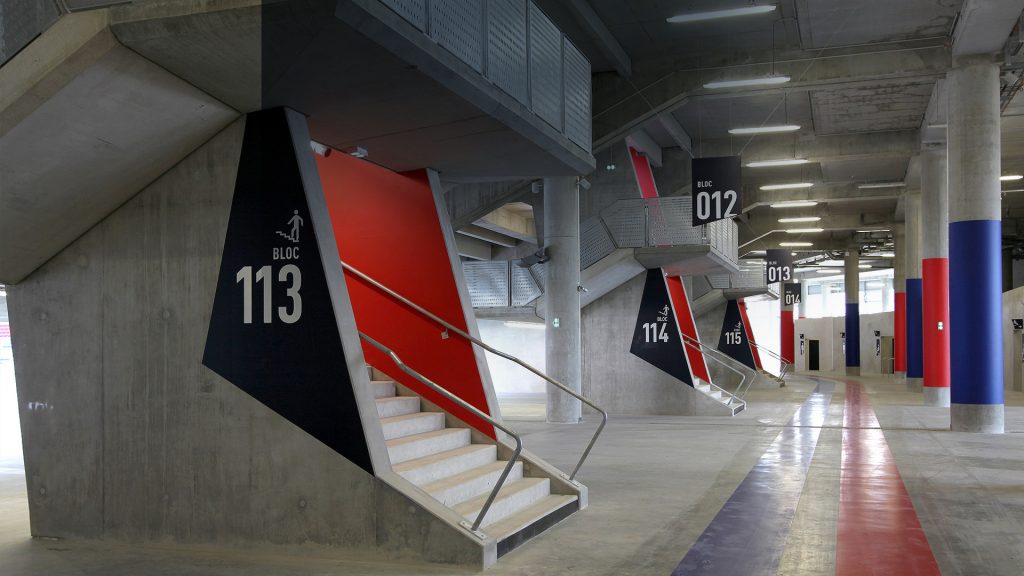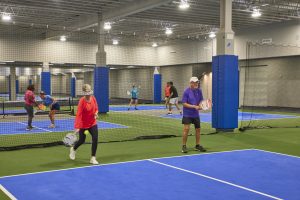Guest post written by Johnny Crosskey, SEO & Content Specialist, The Sports Facilities Companies.
With tons of people walking around and numerous games taking place simultaneously, sports venues can be confusing to navigate. While having signs and venue hosts guiding guests is essential, there’s an opportunity to use technology to build a more seamless and efficient experience and to further brand your facility. Some of the indoor wayfinding innovations listed below present sponsorship opportunities as well as offer customer insights that enhance operations.
Download our Cedar Point Sports Center Case Study
How It Works:
Indoor wayfinding relies on three accessible technologies to guide guests throughout the facility, BLE beacons, Wi- Fi, and an app on your mobile phone (wearables such as wristbands or badges work as well). Your mobile device can transmit location data via a Wi-Fi network and can triangulate your position in a facility by tracking its distance between BLE beacons. This information is sent to a central server that returns a map of the facility and turn-by-turn directions based on the device’s location in relation to the beacons.
One alternative to mobile app wayfinding is to have kiosks with QR codes. When these codes are scanned, the users receive a facility map based on their current location or receive directions to another part of the venue by text or email.
Benefits:
Providing an efficient way to navigate a sports complex by itself will enhance the guest experience, but this technology also offers opportunities for a completely immersive experience. Along with guiding guests to seats and game locations, wayfinding technology can provide information about line lengths at the concession stand, the bathroom, or an apparel shop. The technology can also be as flexible as your facility. If you have a basketball tournament one week, a volleyball tournament the next, and a trade show the following week, indoor wayfinding (thanks to moveable BLE beacons) can be adjusted to fit each unique layout.
Obstacles To Entry:
In many cases, a mobile app is the platform for how wayfinding technology is used. As mentioned in our venue app section, users are resistant to adding a new app to their device, especially one designated for temporary use. Convincing users to adapt a new app is difficult unless the draw is so powerful that they feel compelled to do so.
Indoor wayfinding, especially those involving data transmission to servers and apps requires a deep investment in Wi-Fi infrastructure. As mentioned in previous sections, it’s strongly encouraged to make this investment in the pre- development stage, meaning that indoor wayfinding should considered when the program plan is being developed otherwise the ROI may not justify the cost.
Finally, the quality of the Wi-Fi infrastructure will determine the reliability of your wayfinding system. Wi-Fi is inconsistent from a data transmission standpoint. Think about a time when your Wi-Fi went out while you were at work. That lack of reliability can render the system ineffective at times.
Indoor Wayfinding In Action:
At Cedar Point Sports Center, a digital wayfinding system helps guest find their court amongst 145,000 square feet of sports and entertainment space. Kiosks featuring QR codes that when scanned direct you to your precise location. Additionally, the system doubles as a platform for sponsorship activation.






